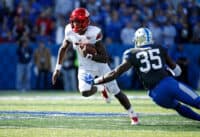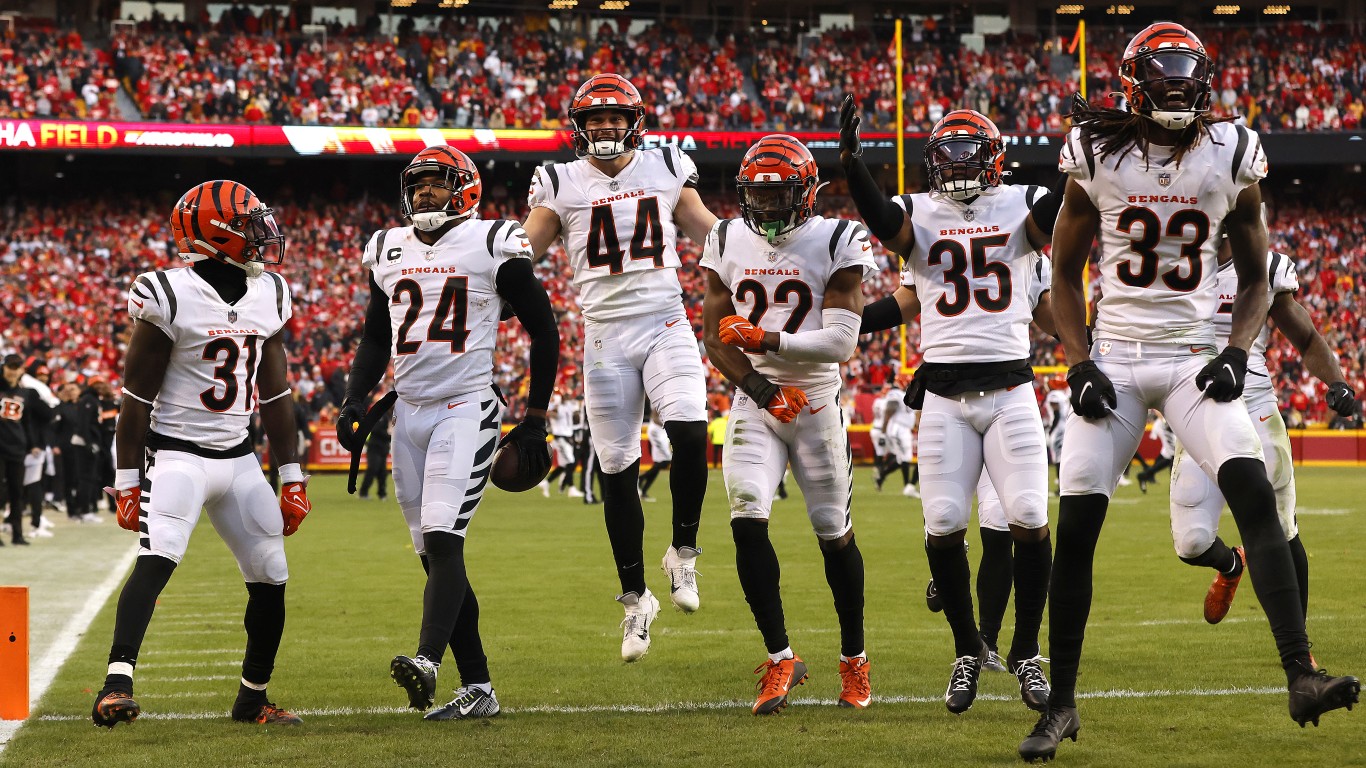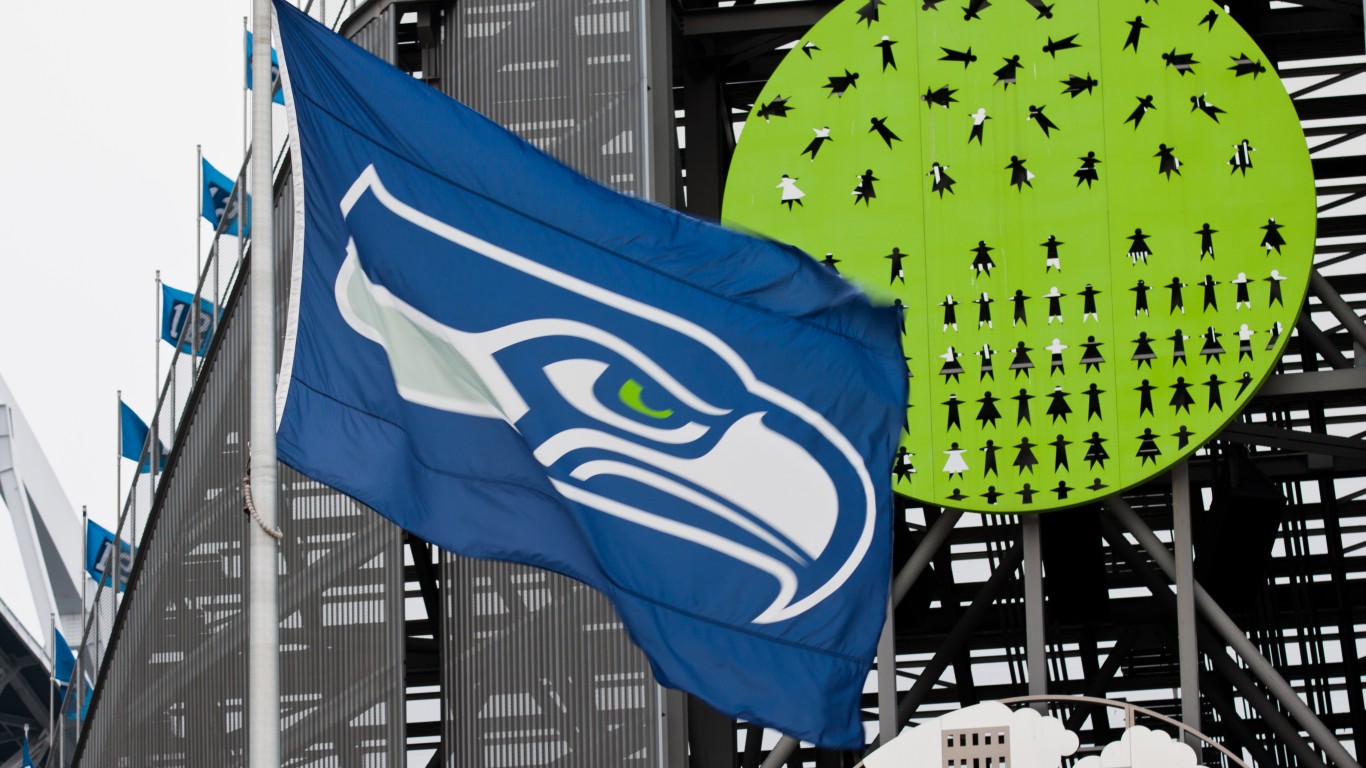
NFL stadiums are massive structures that have the population of small towns on gameday. These behemoths take considerable energy to use. Some are domes that need to be lit and heated or cooled. Others are exposed to the elements but still have plenty of power needs, including massive display screens and lights at night.
To determine the greenest NFL teams, 24/7 Tempo reviewed a study from GamblersPick. NFL stadiums were scored based on their LEED certification status, number of waste reduction and energy saving initiatives, and the extent to which they used solar power and LED lighting.
As the climate crisis continues to worsen some stadiums have decided to become more sustainable. Many have implemented cutting edge technology to update aging buildings and a few newly constructed stadiums have incorporated green designs.
Disappointingly, some new stadiums cost more than a billion dollars to build but did little to make it anywhere close to the top of this list. Massive corporations aren’t exactly known for putting the environment over profits and the NFL is a big business.
But some of these stadiums are striving to do their part and offset their impacts on the planet. For other big businesses that are most definitely not doing their part check out 50 banks enabling the single-use plastic crisis.
It seems barely a week goes by before a new report comes out highlighting how devastating the effects of climate change could be and how we aren’t doing enough to mitigate them. Frustratingly, the pace of reaction by corporations and governments often seems glacial given the existential nature of the threat. Pressuring politicians and corporations is crucial, but it takes time and an organized effort.
There are also things we can do as individuals to try and cut our environmental footprint and live more harmoniously with the natural world. Check out 30 easy ways to be more environmentally friendly.
Click here to see the greenest NFL teams
25. Buffalo Bills (tied)
> Stadium: Highmark Stadium
> Stadium ranking: Tier 5
Highmark Stadium opened in 1973 and is home to the infamous Bills Mafia. The stadium has never used real grass and for a while used AstroTurf to survive the harsh Buffalo winter. However, in 2011 it transitioned to A-Turf Titan, a similar turf product. Over the years the stadium has seen a steady stream of upgrades that have made it modern and greener including an LED jumbotron and LED screens throughout the stadium.
[in-text-ad]
25. Cincinnati Bengals (tied)
> Stadium: Paul Brown Stadium
> Stadium ranking: Tier 5
A survey by Gamblers’ Pick included in their rankings found that Cincinnati Bengals fans were the most interested fans when it comes to having a green stadium with 83.3% expressing support. However, currently Paul Brown stadium is in the fifth tier for sustainability. The stadium sports two large LED displays and other smaller ones throughout.

25. Denver Broncos (tied)
> Stadium: Empower Field at Mile High
> Stadium ranking: Tier 5
Opened in 2001, Mile High Stadium gets its nickname for the city’s excessive elevation. It is considered one of the most difficult stadiums to play in because of the complications from competing at altitude. The stadium added a massive LED display board on the stadium’s south endzone and the venue is currently undergoing upgrades to add LED lighting and bring it in line with FIFA requirements for the 2026 FIFA World Cup.

25. Jacksonville Jaguars (tied)
> Stadium: TIAA Bank Field
> Stadium ranking: Tier 5
The stadium was opened in 1995 and has seen considerable upgrades over the years since. On top of being an NFL stadium, TIAA Bank Field is one of the venues used by the United States men’s soccer team. The stadium has also been to host the Superbowl and is the annual host of college football rivalry games between the University of Georgia and University of Florida. Renovations saw the stadium add two massive LED screens above both endzones.
[in-text-ad-2]
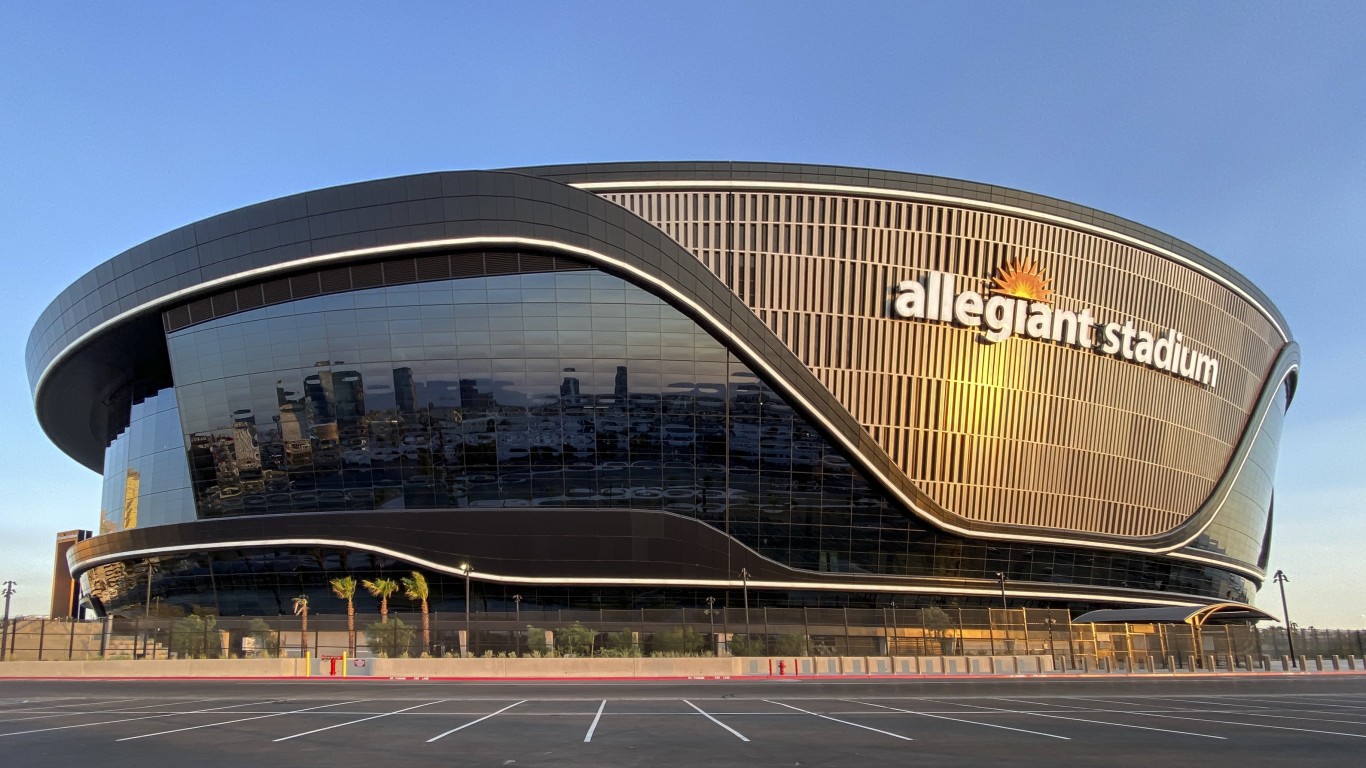
25. Las Vegas Raiders (tied)
> Stadium: Allegiant Stadium
> Stadium ranking: Tier 5
One of the newest stadiums in the NFL, Allegiant Stadium opened in 2020 but still only makes it into the fifth tier for sustainability. The domed stadium provides some escape from the intense Las Vegas heat and tries to manage cooling through sustainable means like LED lighting and solar panels. The stadium uses both natural grass and artificial turf as the Raiders prefer grass but UNLV also uses the stadium and prefers turf. A built-in system allows the stadium to switch between the two surfaces without disturbing either.
25. Los Angeles Chargers and Los Angeles Rams (tied)
> Stadium: SoFi Stadium
> Stadium ranking: Tier 5
SoFi stadium is another brand-new venue that also only managed to make it into the fifth tier of sustainability. Ironically, when surveyed by Gamblers’ Pick, fans assumed it was the greenest stadium in the NFL. SoFi is home to two NFL teams and is the planned venue for the 2022 Super Bowl, 2028 Summer Olympics, and potentially 2026 World Cup.
[in-text-ad]

25. Tennessee Titans (tied)
> Stadium: Nissan Stadium
> Stadium ranking: Tier 5
Across the Cumberland River from downtown Nashville, Nissan Stadium has a capacity of 69,143 and is used for a range of sporting events and performances. The stadium uses natural Bermuda Sod. The stadium was opened in 1999 as part of a move by the Houston Oilers from Texas to Nashville. In 2012 the stadium added LED ribbon boards and two enormous LED endzone boards.
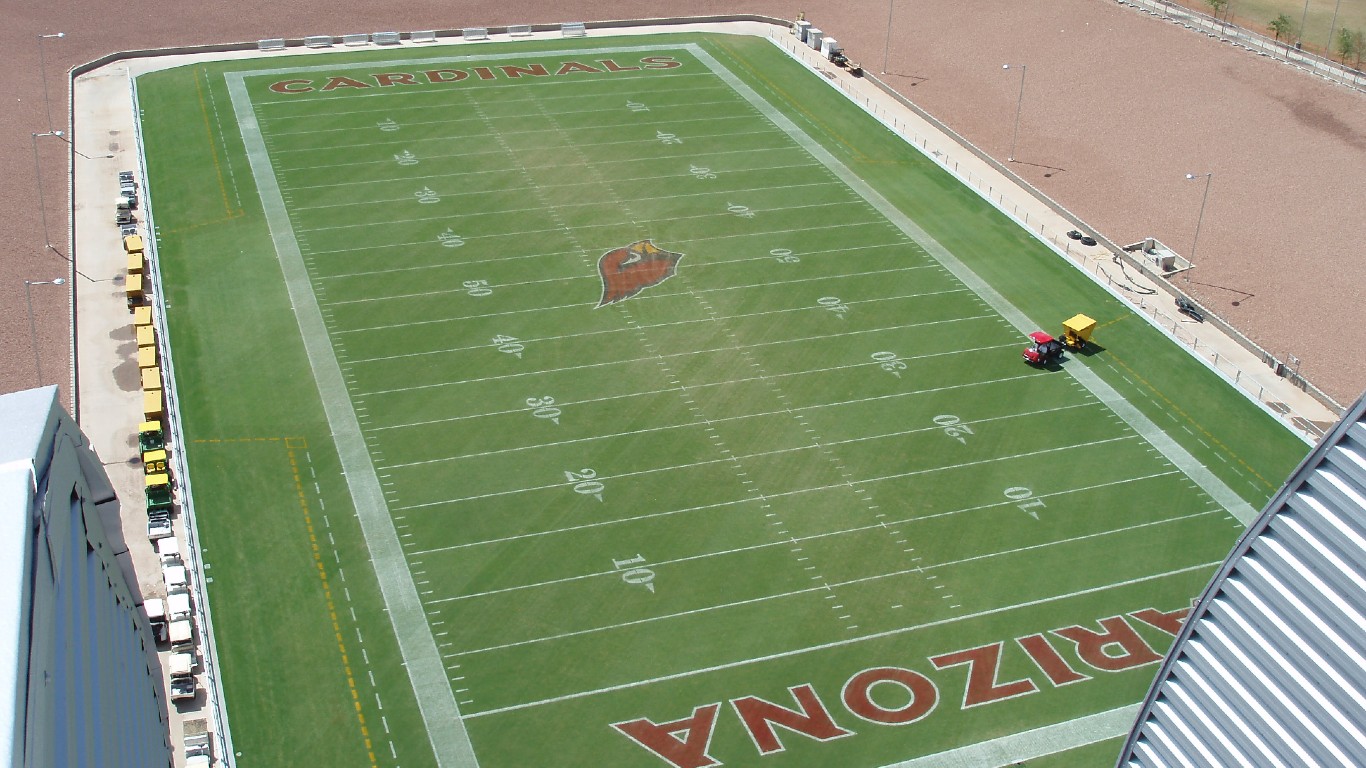
18. Arizona Cardinals (tied)
> Stadium: State Farm Stadium
> Stadium ranking: Tier 4
State Farm Stadium opened in 2006 and is the first ever stadium with a retractable roof built on an incline. At the time it was considered an engineering marvel and architecturally is one of the more attractive stadiums in the NFL. It uses a roll-in natural grass field and LED lighting and boards.
18. Cleveland Browns (tied)
> Stadium: FirstEnergy Stadium
> Stadium ranking: Tier 4
FirstEnergy stadium opened in 1999, replacing Cleveland Stadium which stood on the site since 1931. The old stadium was demolished in 1996 and some of the leftover debris was submerged in Lake Erie to form artificial reefs. This doesn’t win any point in our ranking but probably counts for something, right? FirstEnergy stadium sports LED screens and solar panels for a clean source of some of its energy needs.
[in-text-ad-2]

18. Green Bay Packers (tied)
> Stadium: Lambaeu Field
> Stadium ranking: Tier 4
Originally opened in 1957, Lambeau Field puts to shame much newer stadiums that are less sustainable. The stadium has long been renowned for technology that allows the team to keep an NFL-standard field of grass healthy in the brutal Green Bay winter. The only NFL team owned by its fans, the Packers have implemented LED lighting and board systems throughout the stadium. Along with other measures this has cut down on energy use substantially.

18. Kansas City Chiefs (tied)
> Stadium: Arrowhead Stadium
> Stadium ranking: Tier 4
The one-time holder of the Guinness World Record for loudest stadium, Arrowhead is known for being an intense and wild environment. The stadium was originally opened in 1972 and has seen considerable upgrades over the years. Currently, Arrowhead stadium has an expansive network of solar panels and free electric vehicle charging stations.
[in-text-ad]
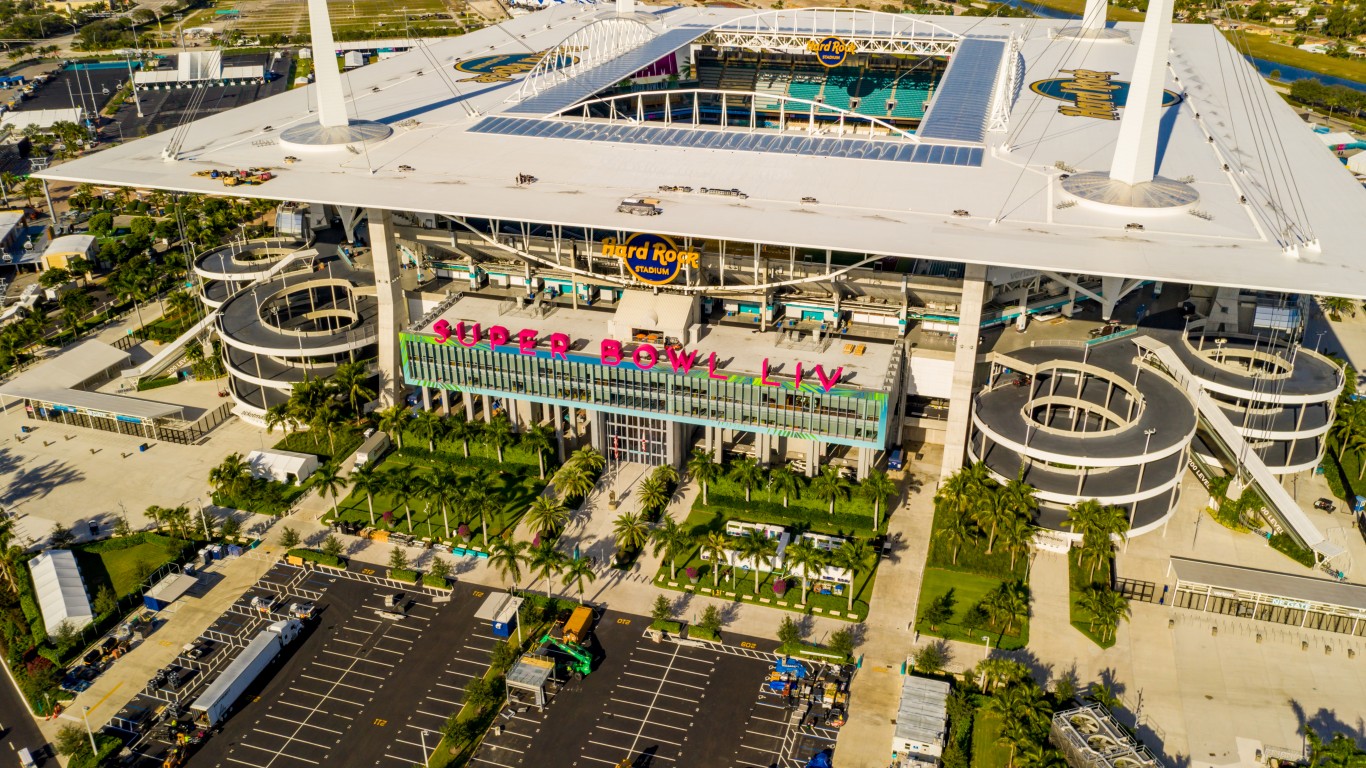
18. Miami Dolphins (tied)
> Stadium: Hard Rock Stadium
> Stadium ranking: Tier 4
The stadium opened in 1987 and saw considerable renovations in 1987. It has been a popular venue for hosting sporting events, as 6 Super Bowls and four BCS championships have been played in the stadium in its relatively short lifetime. In 2015 Hard Rock underwent considerable renovations to modernize it and build tennis facilities. The stadium uses efficient LED lighting and other technology to lower its environmental footprint.
18. New England Patriots (tied)
> Stadium: Gillette Stadium
> Stadium ranking: Tier 4
Gillette Stadium was opened in 2002 to replace Foxboro Stadium. It serves as the home stadium of the Patriots and the New England Revolution of the MLS. In 2010, LED boards and screens were installed throughout the stadium and LED light systems are used as a more power-efficient way to light the stadium. Gillette Stadium uses both solar and wind energy systems as well.
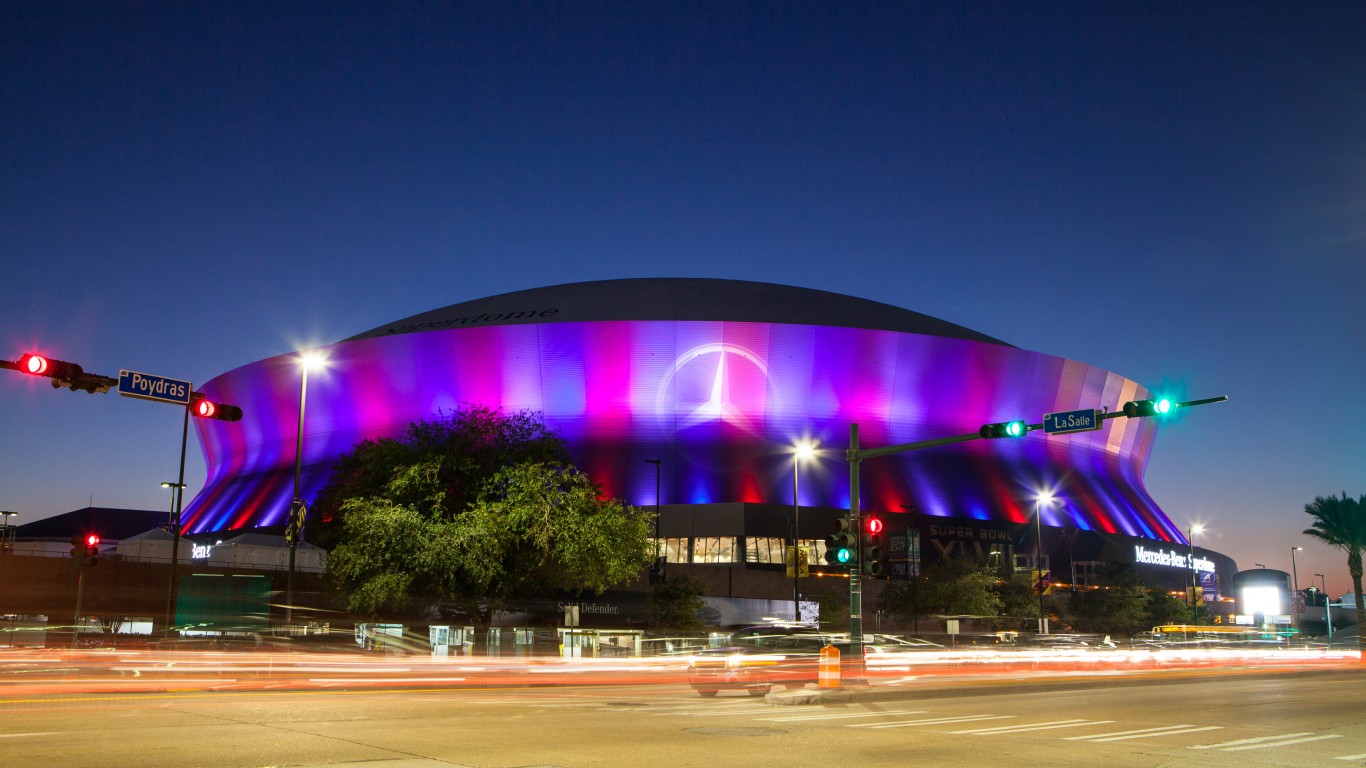
18. New Orleans Saints (tied)
> Stadium: Mercedes-Benz Superdome
> Stadium ranking: Tier 4
The Superdome is another venue that has hosted numerous championships including Super Bowls and NCAA basketball championships. The dome saw upgrades in 2016 to its lighting system, adding smart LED lighting for improved efficiency and the ability to mimic outdoor conditions for day or night. The stadium also added expansive aluminum barriers to reduce heating and cooling costs.
[in-text-ad-2]
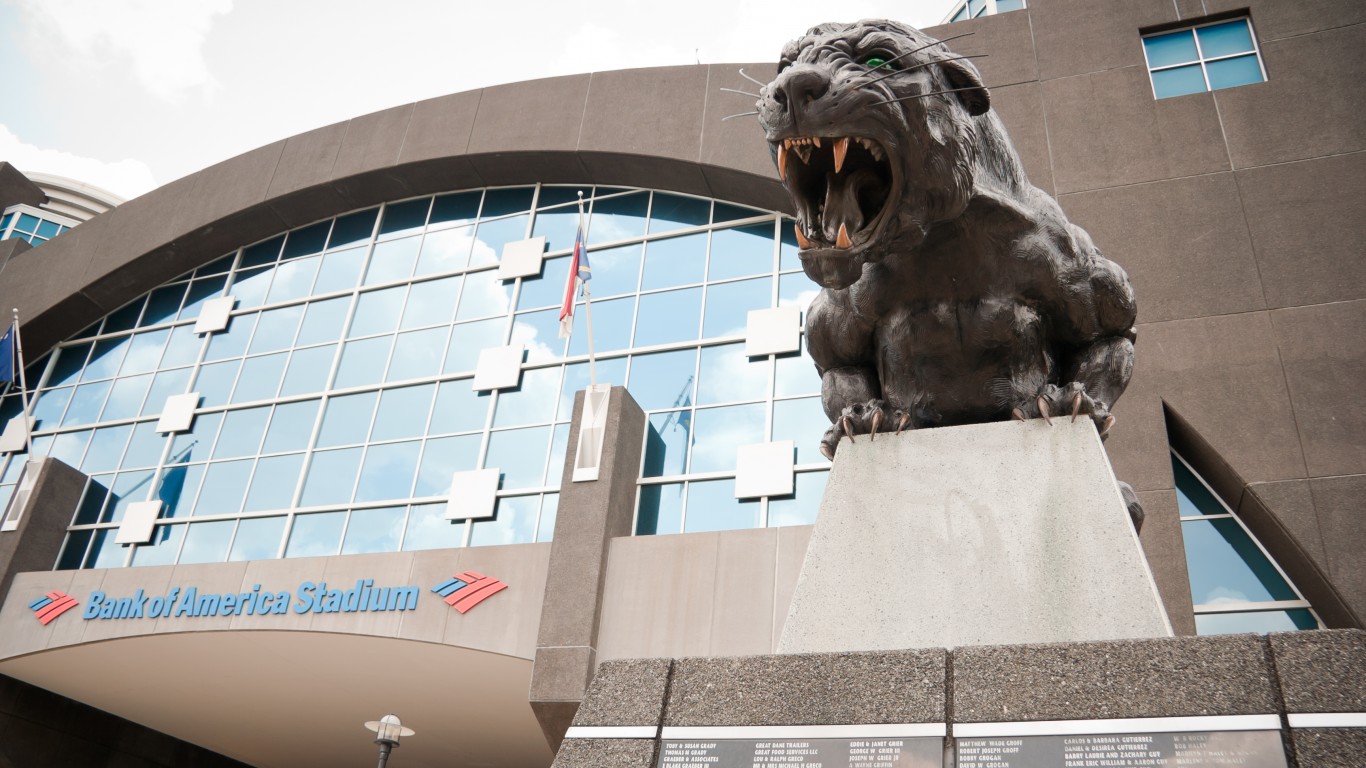
13. Carolina Panthers (tied)
> Stadium: Bank of America Stadium
> Stadium ranking: Tier 3
The BoA opened in 1996, a year after the Panthers became an NFL team in 1995. The stadium is also the planned home of the MLS expansion team Charlotte FC. The venue has seen upgrades to its lighting system, adding LED lights that are more sustainable. In 2019, the Panthers also added solar panels to their stadium.
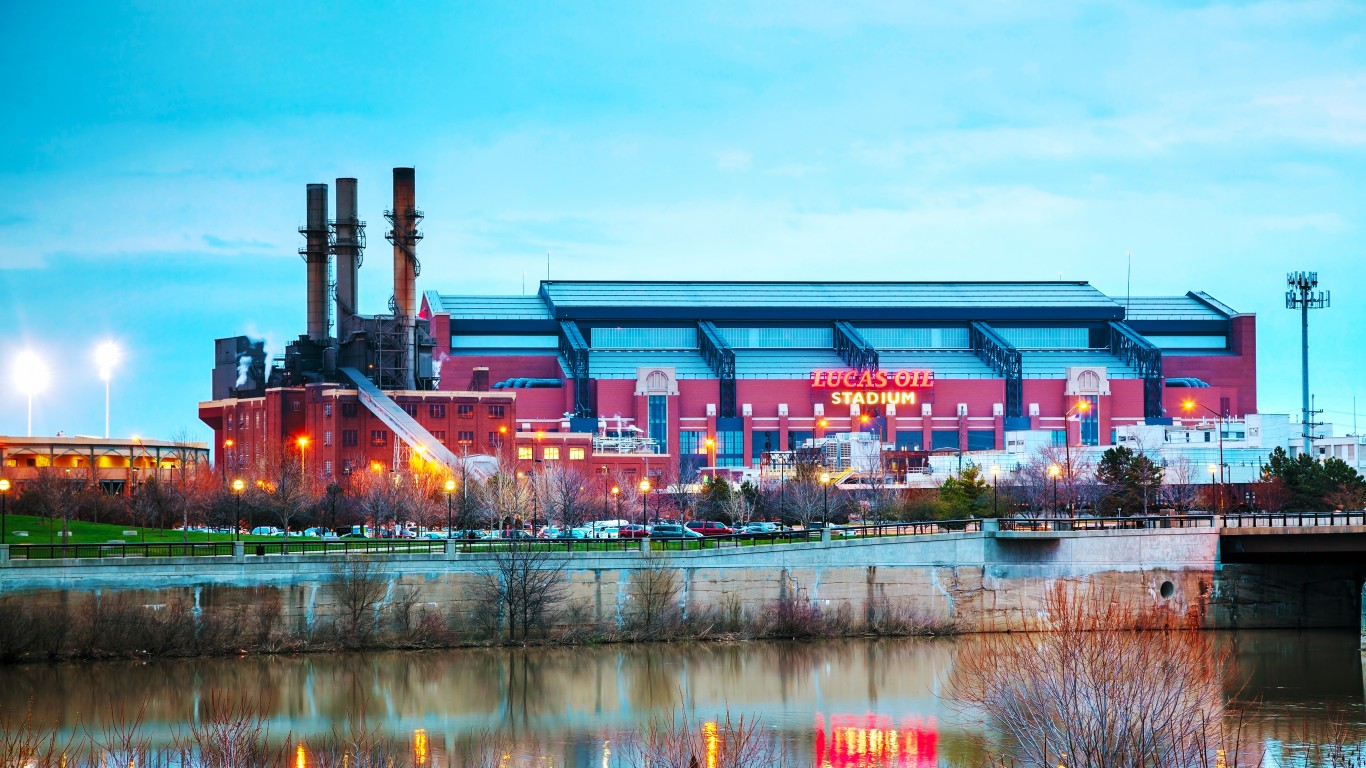
13. Indianapolis Colts (tied)
> Stadium: Lucas Oil Stadium
> Stadium ranking: Tier 3
Lucas Oil Stadium is an indoor stadium with a retractable roof and built in an architectural style that makes it look like an enormous fieldhouse. The stadium is equipped with a smart lighting system and overhead fans which allow it to stabilize temperature and minimize energy loss. Low flow toilets and a recycling program help to maintain a smaller footprint, and the retractable roof can reduce lighting and cooling costs if the weather permits.
[in-text-ad]

13. Pittsburgh Steelers (tied)
> Stadium: Heinz Field
> Stadium ranking: Tier 3
Heinz Field opened in 2001 to replace the aging Three Rivers Stadium. It sits picturesquely across the water from downtown Pittsburgh and has implemented several measures to be more sustainable. The building has separate HVAC and plumbing systems which allows it to maximize energy efficiency. There are also smart LED lighting systems as well as several electric car charging stations.

13. Tampa Bay Buccaneers (tied)
> Stadium: Raymond James Stadium
> Stadium ranking: Tier 3
Raymond James Stadium has served as the site of several Super Bowls including the most recent one where the Buccaneers became the first home team to win the Super Bowl. Significant controversy surrounded the stadium when it was first constructed in 1998 as it was entirely paid for by the public. These days it has been upgraded significantly and now has solar panels and an efficient lighting system.

13. Washington Football Team (tied)
> Stadium: FedEx Field
> Stadium ranking: Tier 3
FedEx field is home to the Washington Football Team and famous for its intense and loud environment. The stadium added 8,000 solar panels and 10 electric vehicle charging stations. Most noteworthy, they have a 30-foot tall statue of a football player made of fully functioning solar panels. Besides football the stadium has been used by both the United States and El Salvadoran national soccer teams.
[in-text-ad-2]
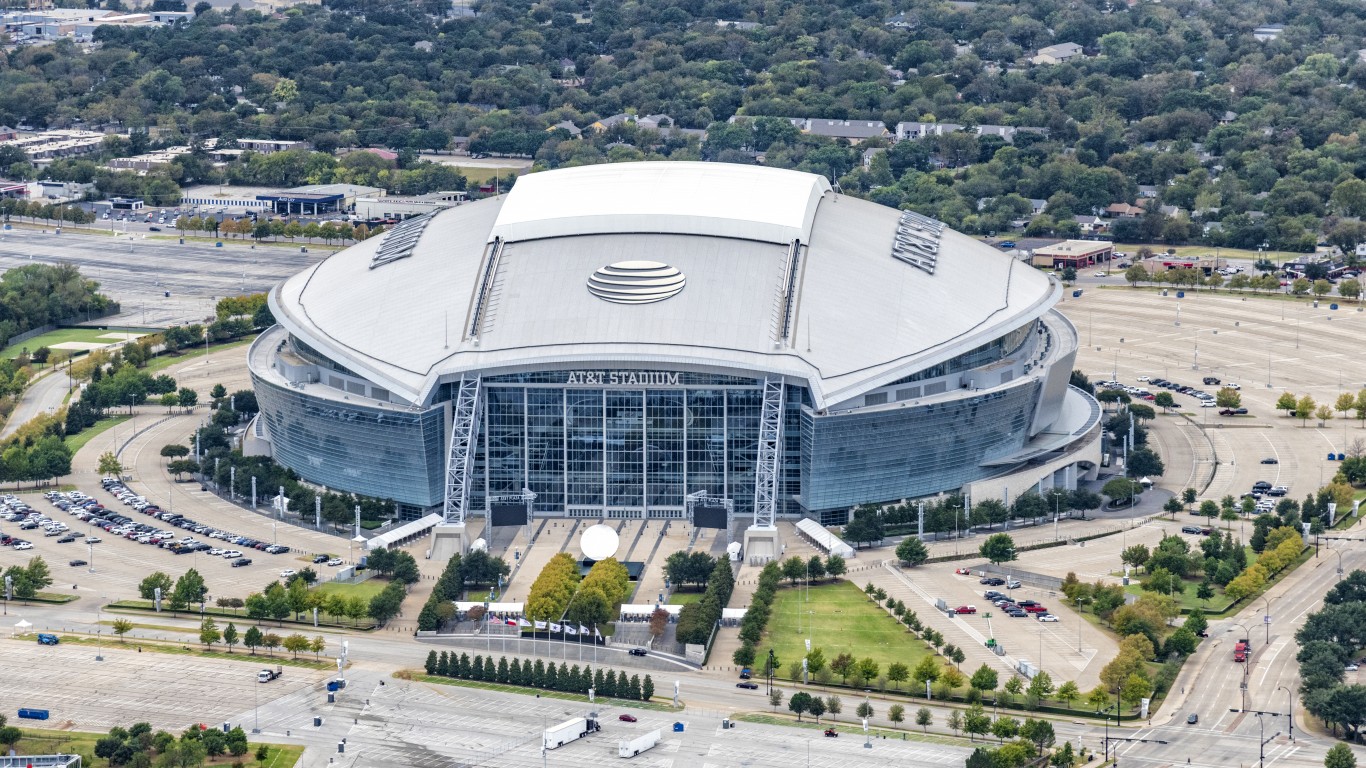
6. Dallas Cowboys (tied)
> Stadium: AT&T Stadium
> Stadium ranking: Tier 2
AT&T Stadium was a cutting-edge behemoth when it opened in 2009. Its jumbotron is still one of the biggest television screens ever created. Powering such a monstrosity, especially in the Texas heat can be very energy intensive. Officials have implemented a green energy plan which allows the facility to run more efficiently.
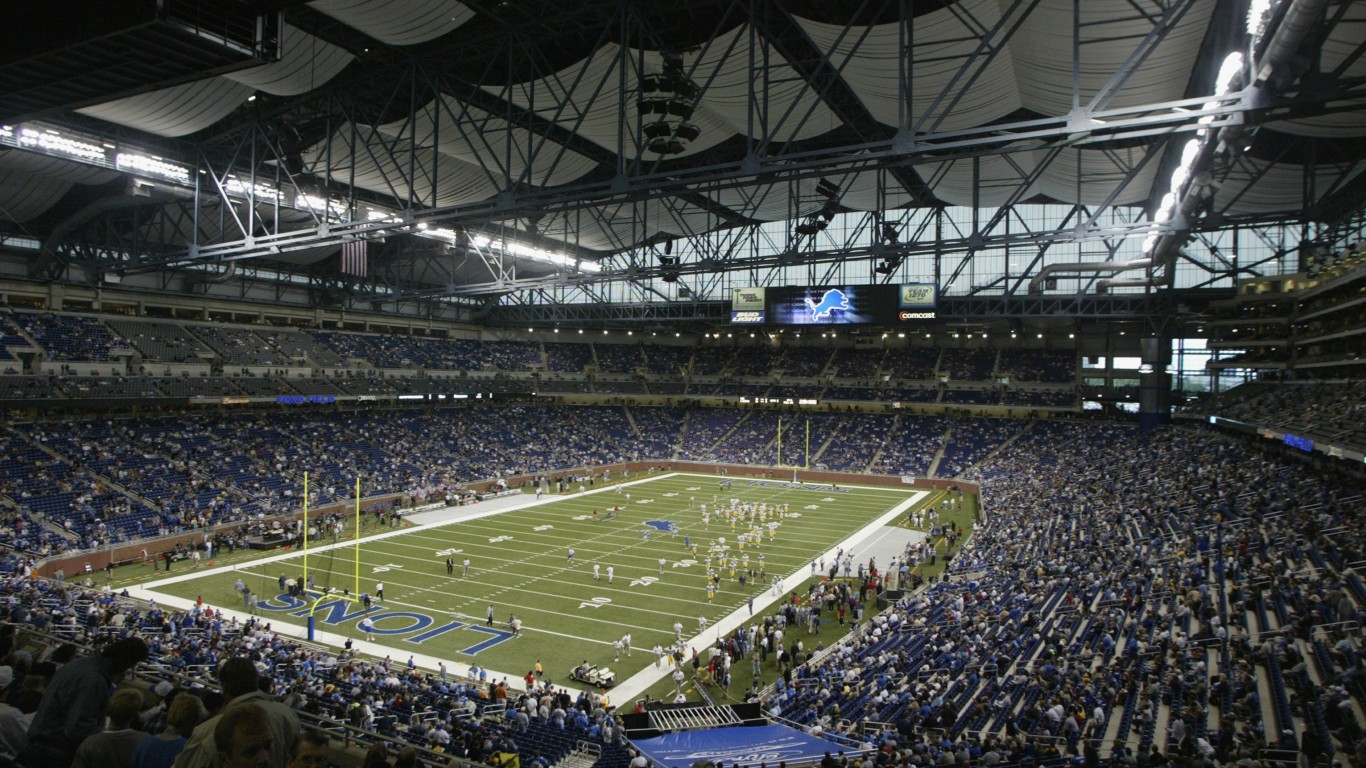
6. Detroit Lions (tied)
> Stadium: Ford Field
> Stadium ranking: Tier 2
Ford Field was opened in 2002 and was designed in part with expansive windows to cut down on the need for artificial light. The stadium has incorporated a range of energy saving methods to cut its costs and decrease its footprint and energy efficient steam heaters are used to keep the stadium warm.
[in-text-ad]

6. Houston Texans (tied)
> Stadium: NRG Stadium
> Stadium ranking: Tier 2
NRG stadium is the home of the Houston Texans and has also been used for the Houston Livestock Show and Rodeo, college football games, and both US and Mexican men’s national team soccer games. The stadium uses LED lights for the entire facility, including the field. It also has a large solar array and several electric vehicle charging stations.
6. Minnesota Vikings (tied)
> Stadium: U.S. Bank Stadium
> Stadium ranking: Tier 2
The architecturally impressive stadium opened in 2016 with a host of modern and sustainable features. The stadium uses entirely LED lighting and other eco-friendly features to consume significantly less energy than traditional stadiums. However, the striking aesthetic has come at an environmental cost. Architects were warned that the highly reflective glass would be a hazard to migratory birds but chose to use it anyway resulting in many bird deaths.
6. New York Giants and New York Jets (tied)
> Stadium: MetLife Stadium
> Stadium ranking: Tier 2
MetLife Stadium opened in 2010 with a pledge to reduce its carbon footprint despite replacing a stadium half its size. The measures taken by the stadium include more efficient lighting, a solar panel array and Low E window coatings to help with insulation. The stadium also has the world’s first Certified Green energy efficient restaurant.
[in-text-ad-2]

6. Seattle Seahawks (tied)
> Stadium: Lumen Field
> Stadium ranking: Tier 2
Lumen Field was opened in 2002 and has undergone significant green energy upgrades since. The stadium is famous for being an intense environment and has gotten so loud it’s registered on seismic instruments. The stadium has point-of-use lighting in all restrooms, storage facilities and concession stands, LED lighting throughout and a large array of solar panels.
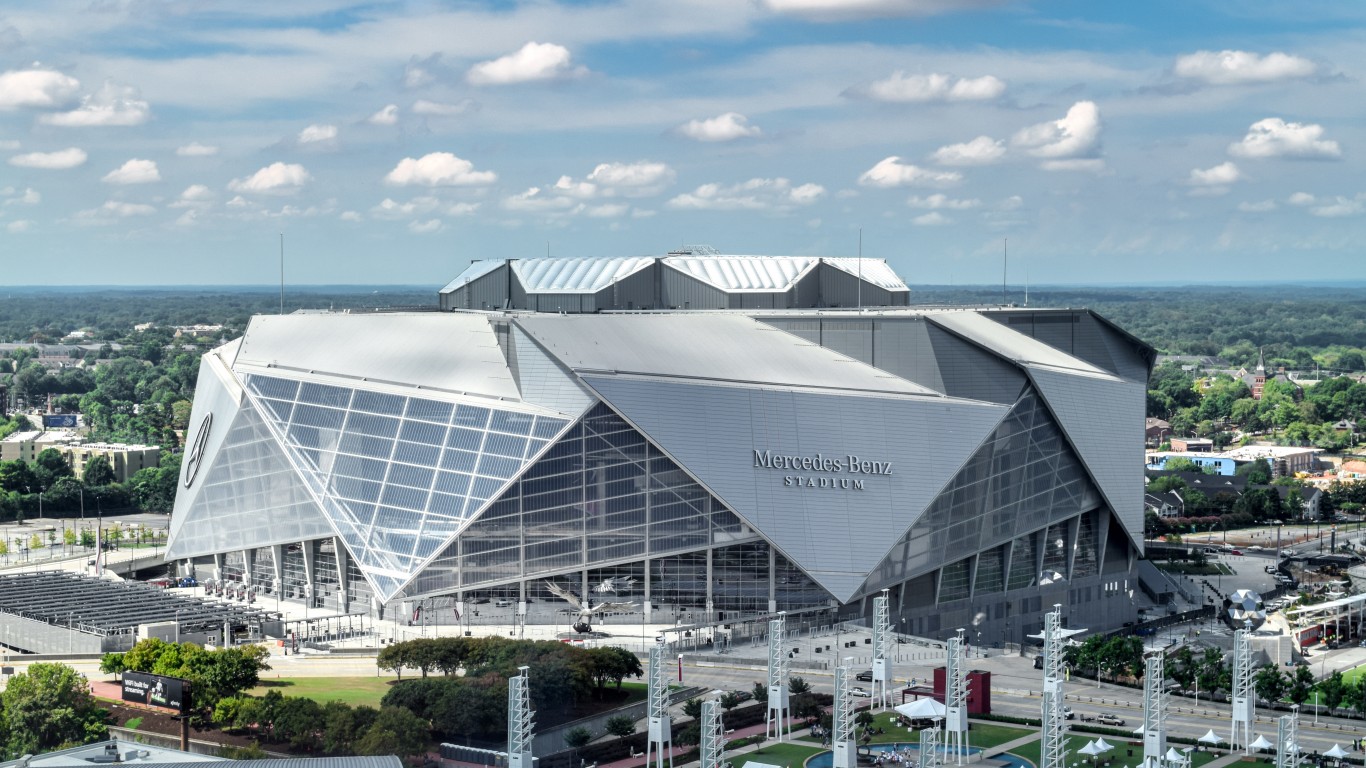
1. Atlanta Falcons (tied)
> Stadium: Mercedes-Benz Stadium
> Stadium ranking: Tier 1
Unlike some of the newer stadiums on this list, Mercedes-Benz made sustainability a key part of its design when it opened in 2017. The stadium incorporates a wide range of innovative features to lessen its carbon footprint. It uses natural lighting from large windows and is covered in LED lighting. Water efficient fixtures and conservation infrastructure decrease water use while it also has a storm water storage system to prevent flooding in the surrounding areas. The stadium is near a hub for public transport and even has a bike valet program to encourage alternate ways to arrive at the game.
[in-text-ad]

1. Baltimore Ravens (tied)
> Stadium: M&T Bank Stadium
> Stadium ranking: Tier 1
Opened in 1998, M&T Bank Stadium has made considerable strides to become a leader in sustainability. The stadium installed low flow fixtures and waterless urinals to conserve water use. It has considerably decreased its energy use over the years and increased recycling. The facility has a green cleaning program that improves air quality and officials encourage users to arrive at games by public transportation.
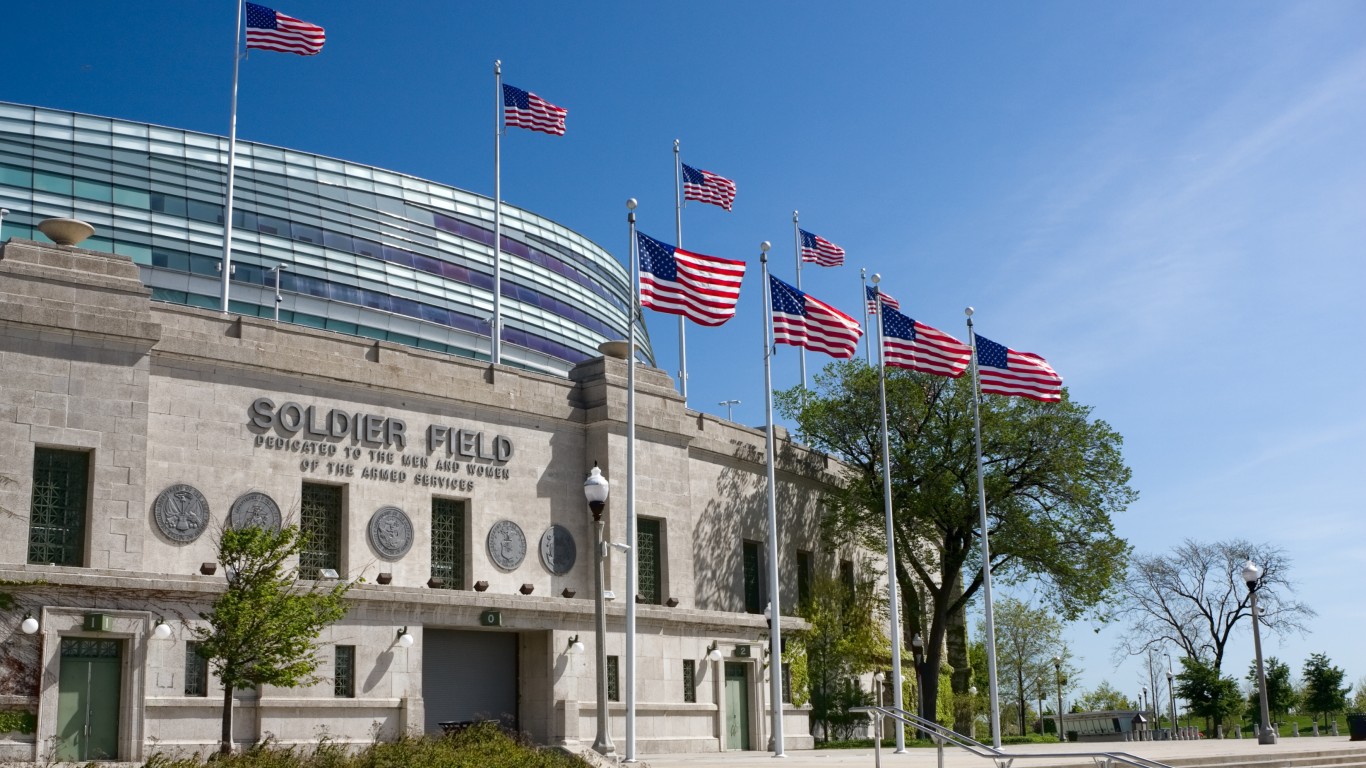
1. Chicago Bears (tied)
> Stadium: Soldier Field
> Stadium ranking: Tier 1
Soldier Field is the oldest stadium in the NFL and is still in the first tier when it comes to sustainability. The stadium has implemented measures like increased recycling and composting, serving locally grown foods, donating unused foods to homeless shelters and using green cleaning products. They have also replaced all conventional lighting with LEDs and built several free electric car charging stations.
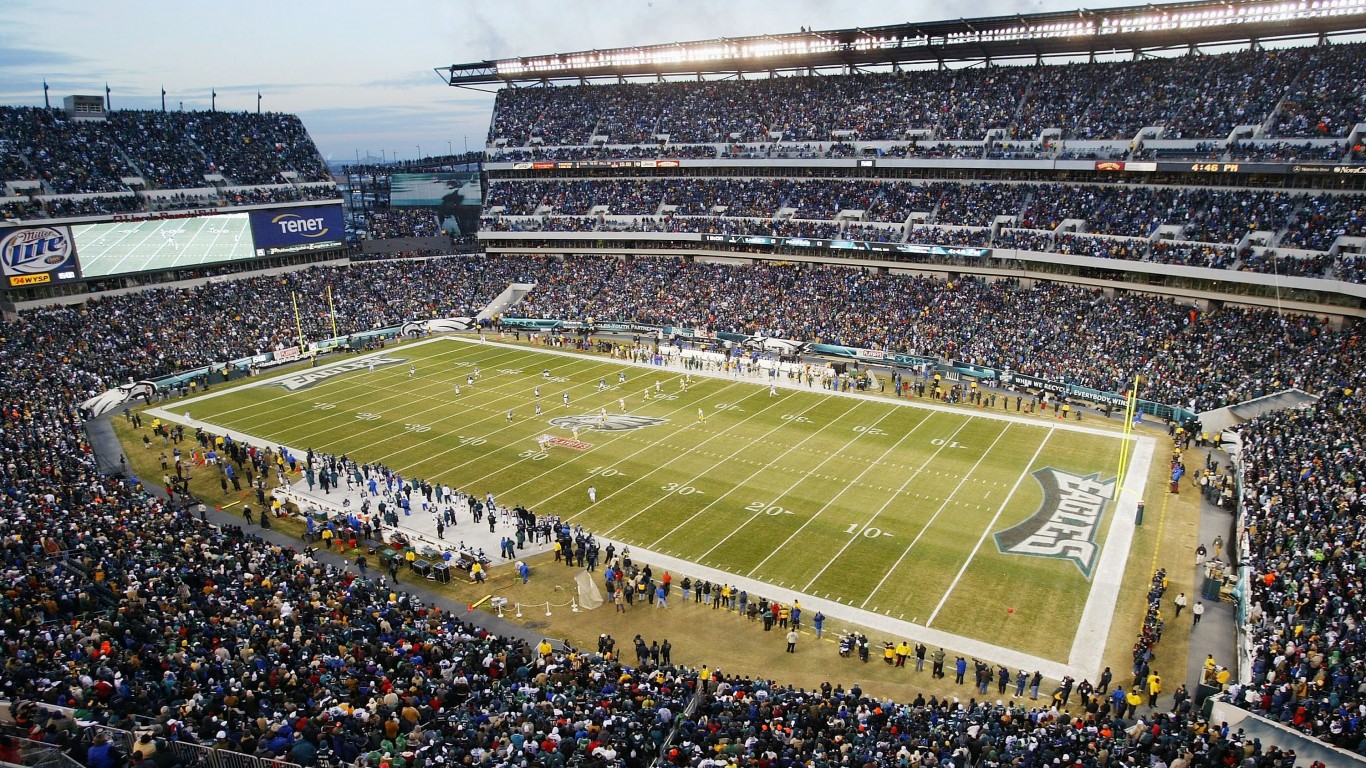
1. Philadelphia Eagles (tied)
> Stadium: Lincoln Financial Field
> Stadium ranking: Tier 1
The Linc opened in 2003 but has still managed to upgrade its facilities. It has the largest solar panel array in the NFL and several micro wind-turbines. These systems produce a considerable amount of energy and the stadium purchases the rest that it needs from offsite renewable sources. Further, smart LED lighting systems have allowed the stadium to reduce its electricity use. There is also a considerable recycling program and used fryer oil from concession stands is converted into biodiesel for the stadium’s maintenance vehicles and equipment.
[in-text-ad-2]

1. San Francisco 49ers (tied)
> Stadium: Levi’s Stadium
> Stadium ranking: Tier 1
Levi’s Stadium opened in 2014 and was planned as a leader in sustainability. The facility’s solar array creates enough power yearly to offset its use during the season. Green roof technology increases insulation and decreases heating and cooling costs. The stadium also uses LED lighting for illumination and is near a crossroads of public transportation. Further it contains a special green HVAC system, recycling initiatives and programmable lighting control systems.
Is Your Money Earning the Best Possible Rate? (Sponsor)
Let’s face it: If your money is just sitting in a checking account, you’re losing value every single day. With most checking accounts offering little to no interest, the cash you worked so hard to save is gradually being eroded by inflation.
However, by moving that money into a high-yield savings account, you can put your cash to work, growing steadily with little to no effort on your part. In just a few clicks, you can set up a high-yield savings account and start earning interest immediately.
There are plenty of reputable banks and online platforms that offer competitive rates, and many of them come with zero fees and no minimum balance requirements. Click here to see if you’re earning the best possible rate on your money!
Thank you for reading! Have some feedback for us?
Contact the 24/7 Wall St. editorial team.
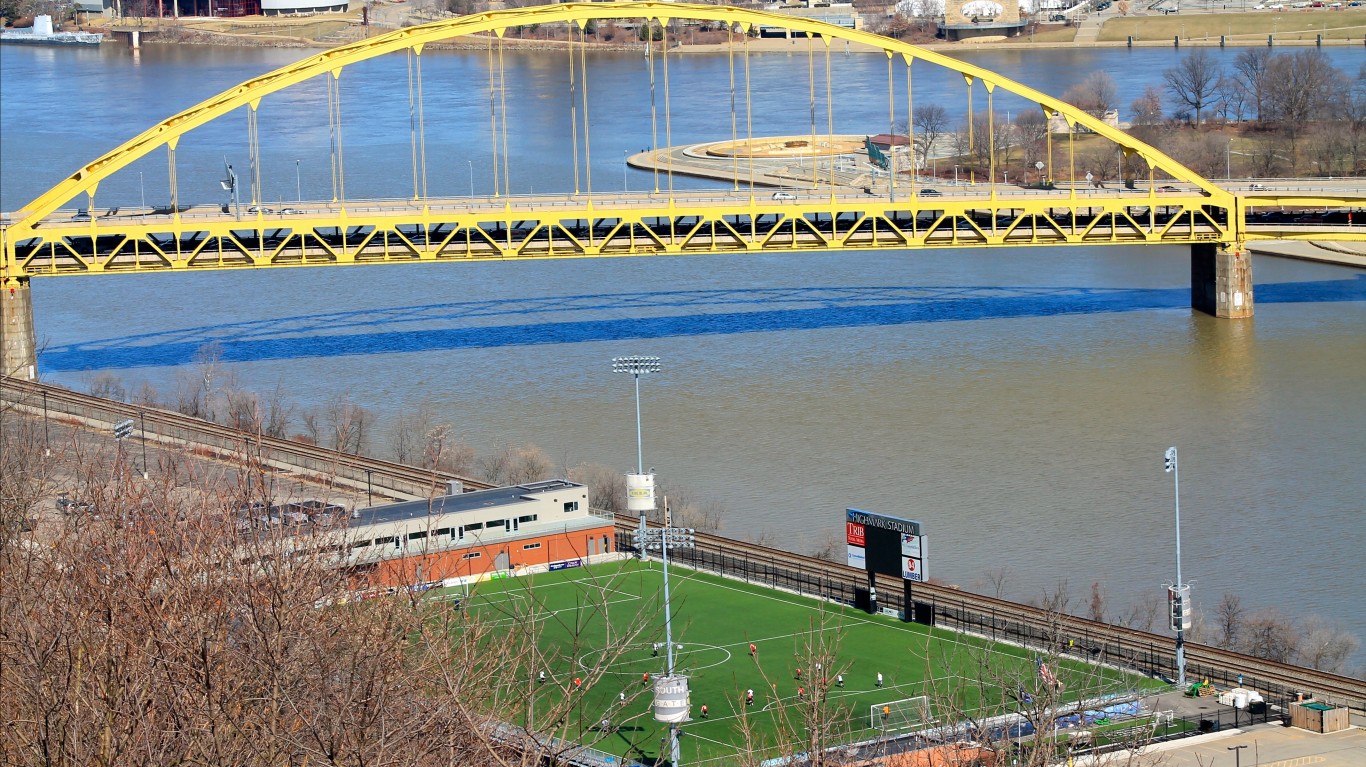
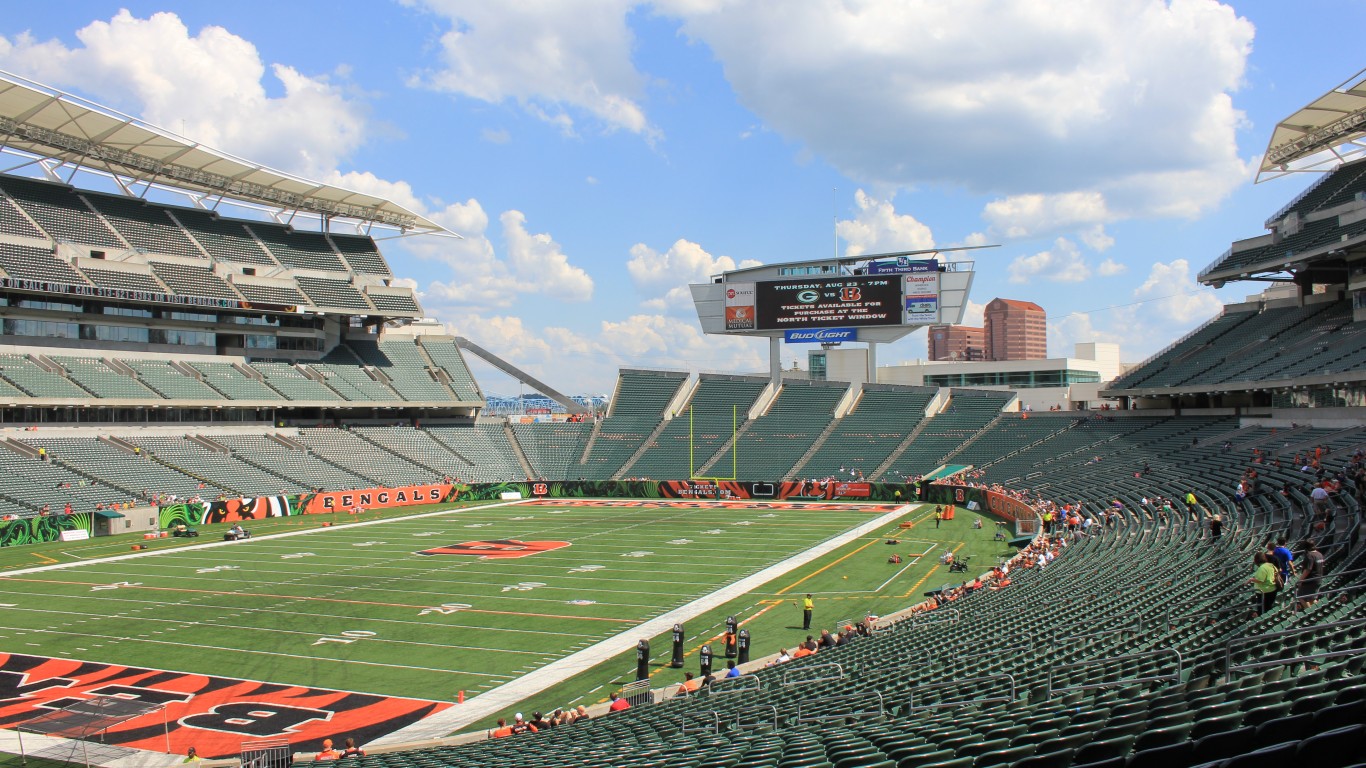
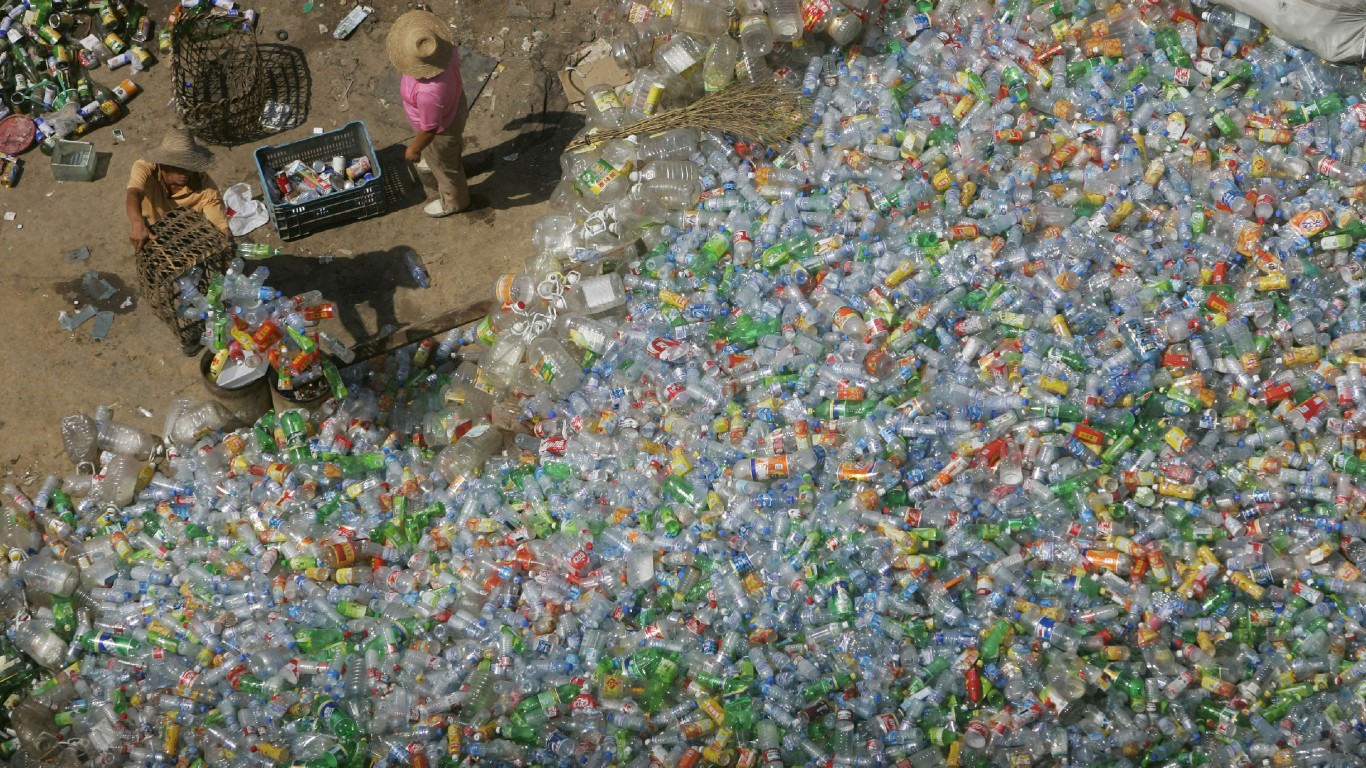 24/7 Wall St.
24/7 Wall St.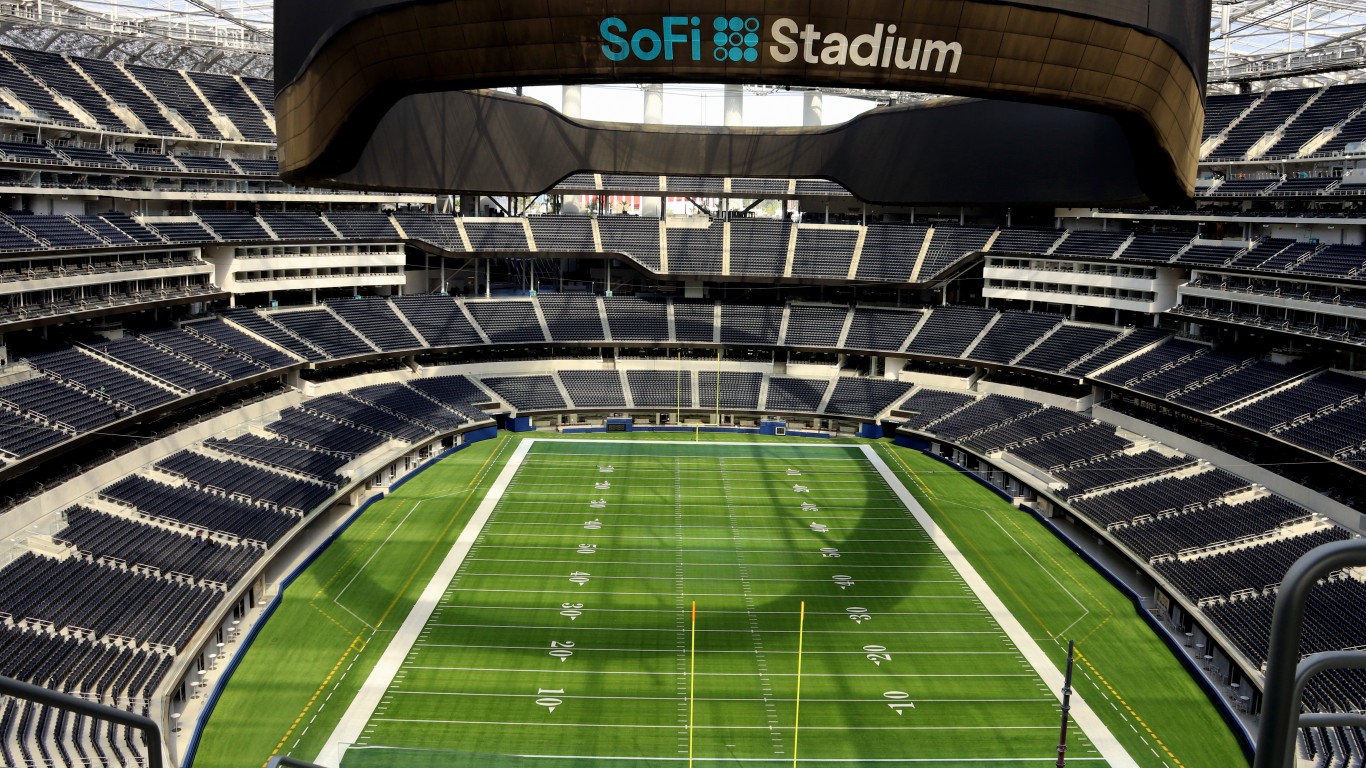
 24/7 Wall St.
24/7 Wall St.
 24/7 Wall St.
24/7 Wall St.


